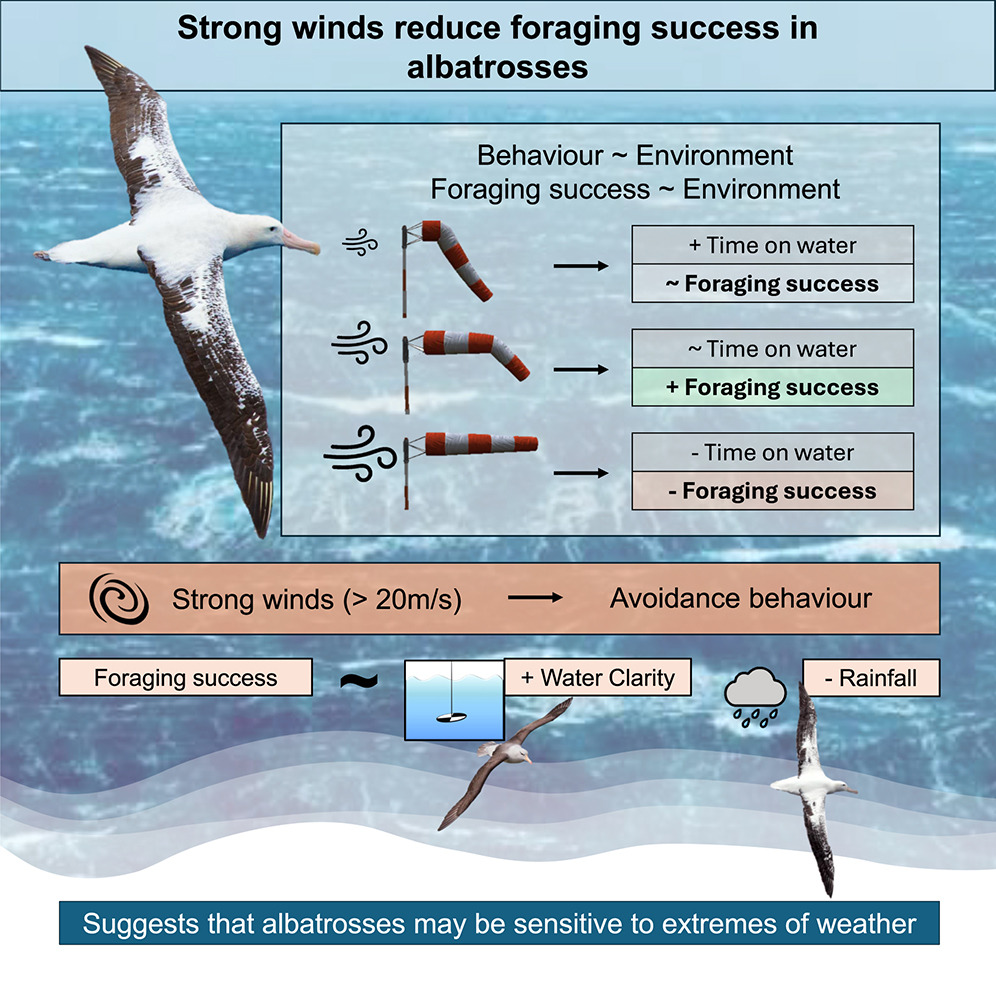 The graphical abstract from the paper.
The graphical abstract from the paper.
Jamie Darby (School of Environmental Sciences, University of Liverpool, UK) and colleagues have published open access in the journal Current Biology on the impact of extreme weather on the foraging success of albatrosses.
The paper’s abstract follows:
“Knowledge of how animals respond to weather and changes in their physical environment is increasingly important, given the higher frequency of extreme weather recorded in recent years and its forecasted increase globally.1,2 Even species considered to be highly adapted to extremes of weather, as albatrosses are to strong winds,3,4,5 may be disadvantaged by shifts in those extremes. Tracked albatrosses were shown recently to avoid storms and the strongest associated winds.6 The drivers of this response are so far unknown, though we hypothesize that turbulent storm conditions restrict foraging success, possibly by reducing the detectability or accessibility of food, and albatrosses divert toward more profitable conditions where possible. We tested the impact of the physical environment—wind speed, rainfall, water clarity, and time of day—on feeding activity and success of two species of albatrosses with contrasting foraging strategies. We tracked 33 wandering and 48 black-browed albatrosses from Bird Island (South Georgia) with GPS and immersion loggers, and 19 and 7 individuals, respectively, with stomach-temperature loggers to record ingestions, providing an in-depth picture of foraging behavior. Reduced foraging profitability (probability of prey capture and overall mass) was associated with stormy conditions, specifically strong winds and heavy rain in surface-seizing wandering albatrosses, and the probability of prey capture was reduced in strong winds in black-browed albatrosses. We show that even highly wind-adapted species may frequently encounter conditions that make foraging difficult, giving context to storm avoidance in albatrosses.”
Reference:
Darby, J., Phillips, R.A., Weimerskirch, H., Wakefield, E.D., Xavier, J.X., Pereira, J.M., Patrick, S.C. Strong winds reduce foraging success in albatrosses, Current Biology, 2024, ISSN 0960-9822, https://doi.org/10.1016/j.cub.2024.10.018
A video abstract has also been produced for this paper and can be viewed at the link to the paper above.
26 November 2024

 English
English  Français
Français  Español
Español